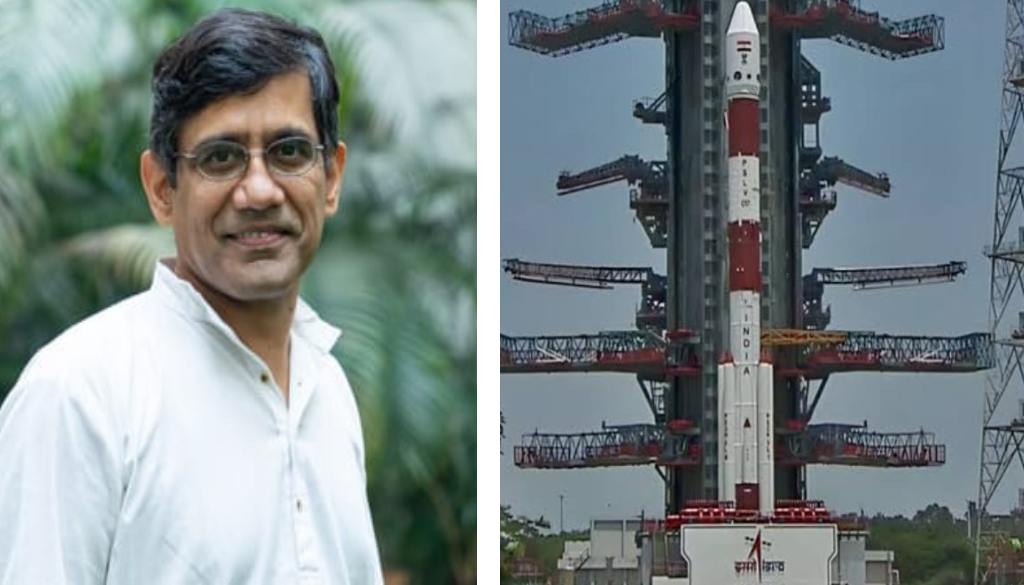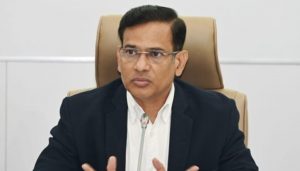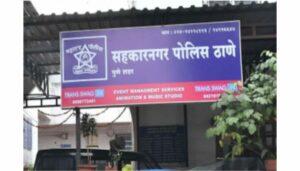Exploring the Sun: Prof. Bhas Bapat of IISER Pune Sheds Light on India’s Aditya L1 Solar Mission

Pune, 2nd September 2023: Prof. Bhas Bapat is the faculty member in the department of physics at the Indian Institute of Science Education and Research (IISER) Pune, a position he has held since August 2015. Prior to joining IISER, he worked at the Physical Research Laboratory in Ahmedabad, where the idea for the Aditya L1 Solar mission was proposed in 2013. Since then, he has continued to be a part of the mission.
Prof. Bapat spoke to Punekar News reporter Anaum Shaikh and shared details about his journey, his contribution to Aditya L1, the uniqueness of the mission, major challenges faced during the mission, and much more.
Before we start, could you please tell the readers about yourself, your education, and a little bit about your work?
Prof Bapat: Yeah, I studied in Pune at Ferguson College and then went to IIT Bombay for my master’s degree. I completed my PhD at the Tata Institute of Fundamental Research in Mumbai and later went for a postdoc in Germany. I worked for many years at the Physical Research Laboratory in Ahmedabad. And now, I have been at IISER Pune since 2014.
You have a PhD. What was your topic, and how has that helped in the Aditya L1 solar mission?
Prof Bapat: My PhD was in experimental atomic and molecular physics. So, the techniques used in atomic and molecular physics are very useful for all kinds of space-related observations because they also require the detection of light, charged particles, radiation, and so on. The techniques are very similar, and that’s where my background helps.
How many years have you worked on this research? In PRL, what was your team developing?
Prof Bapat: This instrument was developed at PRL in my former group. So, when I was at PRL, we proposed this idea. Soon after, I came to IISER, but the work continued at PRL. It all started in 2013, which was 10 years ago.
Could you please explain the Aditya L1 mission?
Prof Bapat: This mission is basically a solar observatory. It has seven different instruments and will be positioned at what is called the First Lagrange point of the Earth-Sun system, which is about 1.5 million kilometers from Earth. The advantage of that point is that Earth’s gravitational pull cancels out the Sun’s gravitational pull. This spacecraft, when placed around or near that point, will offer an uninterrupted view of the Sun without anything blocking it. It will revolve around the Sun, just as the Earth does, in a halo orbit, constantly observing the Sun without any obstructions.
What has been the motive behind this mission, and what will we achieve from this?
Prof Bapat: The main motivation is to study the solar wind and observe the Sun’s corona to improve our understanding of all the processes happening on the Sun. To observe the Sun with greater clarity, we need to go beyond Earth’s environment, which prevents many particles from reaching us. Going to the First Lagrange point will help us observe these parts.
What makes Aditya L1 unique among all the other missions?
Prof Bapat: It’s a little difficult to pinpoint its uniqueness, but it accomplishes multiple objectives in one go. It is a multi-instrument observatory, which is somewhat distinctive. It represents an improvement over previous missions, particularly in obtaining newer information about the Sun’s corona.
What is the time period of this mission?
Prof Bapat: The spacecraft can stay in position for five years, but it will reach the First Lagrange point in about three months. After that, the data will start coming in. There are some testing phases, so we can expect to start getting results within three to six months.
What are Aditya L1’s seven instruments, and what will they do?
Prof Bapat: All of them are scientific instruments. Four instruments will observe different kinds of electromagnetic radiation from the Sun, including visible light, ultraviolet light, X-rays, and more. Three others will detect particles like protons, alpha particles, and other heavy element ions emitted by the Sun. There is one more instrument that will measure the local magnetic field at the spacecraft’s location.
Will the data collected from Aditya L1 improve our ability to predict space weather and its effects on Earth’s infrastructure?
Prof Bapat: To some extent, yes. Space weather refers to how Earth’s atmosphere is affected by events happening outside in space, primarily the behavior of the Sun. Anything emitted from the Sun can potentially affect Earth’s atmosphere, and these observations will help us understand solar activity changes, providing some advantage in predicting events.
Can events like a solar storm be predicted beforehand?
Prof Bapat: They can be predicted to some extent, but it’s not something that can be forecasted a few days in advance due to vast distances and communication delays. However, having constant observations will provide a slight advantage.
Have there been any similar missions like Aditya L1 in the past?
Prof Bapat: Yes, there are quite a few spacecraft missions located at the First Lagrange point. Some missions are from NASA, and others are from ESA (European Space Agency) that are already positioned there.
So, where does India stand in this regard?
Prof Bapat: It’s not so much a race; it’s another observatory aiming to advance upon what previous ones have achieved.
Are we focusing on phenomena such as solar flares or coronal mass ejections for in-depth study?
Prof Bapat: Solar flares and coronal mass ejections cannot be predicted, but whenever they happen, we will be ready to observe them. Since we are active all the time, we can observe them whenever they occur.
You mentioned that the idea was developed 10 years ago, and now we are finally sending it to space. What were some major challenges you faced and how did you overcome them?
Prof Bapat: There are many challenges in space missions. Systems need to be very reliable, work in harsh environments, be compact, and not weigh too much. We faced all these challenges and had to remain patient, constantly improving to ensure a reliable instrument. These challenges are ever-present in space missions, even as technology advances.
Is the Aditya L1 mission collaborating with other solar observatories or space agencies to enhance solar research?
Prof Bapat: Do you mean from other countries? Not in real time. We are not exchanging data in real time, but over time, this data will be available for others to use, and collaborations can develop. Some individuals in this mission already have collaborations with other agencies.
How significant will the success of this mission be, especially after the success of Chandrayan 3?
Prof Bapat: It will be a significant moment because there are not many space missions purely dedicated to scientific research. Aditya L1 is not for applications like communication or weather prediction. After Astrosat, this is India’s second satellite dedicated to purely fundamental science objectives, making it a notable achievement.
What are you currently working on, and what are the other big space missions that the public should look out for?
Prof Bapat: ISRO is planning further missions, including planetary explorations, manned missions, and more. It’s challenging to say which missions will proceed, but there are numerous plans and instrument developments. While my primary work is not in space physics, I will likely continue to be associated with space missions in some capacity.
One message you would like to give to the younger generation?
Prof Bapat: There are plenty of challenges, but let your imagination drive you to accomplish greater things, and opportunities will be there for you.





